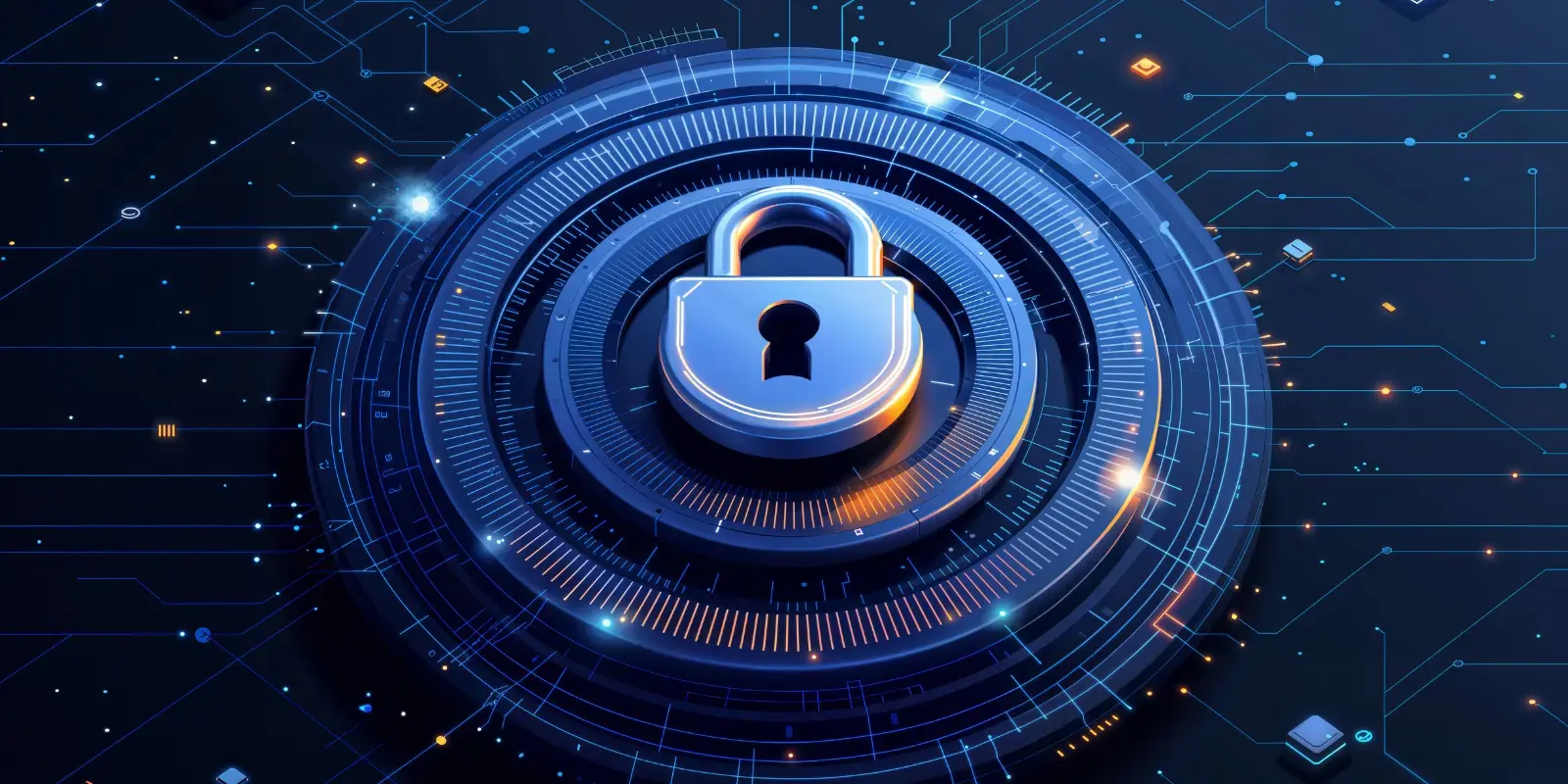In the dynamic realm of cybersecurity, explore the transformative power of the Zero Trust Security Framework. It redefines trust, emphasizing continuous verification and proactive protection.
Is trust a luxury we can still afford in today's ever-escalating cybersecurity battleground? Suspicion lurks beneath the surface of our digital world, where once solid defenses now seem fragile. Zero Trust Security Framework is more than just a strategy shift it's a revolution reshaping the very foundations of cybersecurity. It demands our attention and prompts us to rethink our approach. How can we rely on traditional security models when threats continue to advance? Suspicion, in this context, becomes a valuable asset, urging us to question, scrutinize, and, most importantly, adapt.
Join us on a journey to unravel the mysteries of Zero Trust and discover how this groundbreaking paradigm shift is redefining the way we safeguard our digital assets in an age where trust is increasingly elusive.
What is Zero Trust?
Zero Trust is more than just a trendy term; it signifies a profound transformation in the landscape of cybersecurity. It challenges the age-old "trust but verify" mindset, paving the way for a "never trust, always verify" philosophy. In an era, fraught with increasingly sophisticated cyber threats, this shift is not a luxury but a necessity.
The realm of Zero Trust solutions encompasses a diverse array of innovative technologies and strategies. From multi-factor authentication and robust encryption to the integrated approach of secure access service edge (SASE), this paradigm equips us with a formidable arsenal against modern threats. To navigate this ever-evolving domain successfully, it is imperative to grasp the full spectrum of tools and technologies at our disposal. This article will serve as your guide, unraveling the intricacies of Zero Trust and providing insights to facilitate a seamless and effective implementation.
The Shift in Cybersecurity
The conventional security model, centered around perimeters, has become woefully inadequate in safeguarding against the onslaught of advanced threats. In an era marked by the pervasive embrace of cloud services and the ubiquity of remote work, organizations are witnessing an unprecedented expansion of their attack surface. This shifting dynamic has rendered traditional security postures impotent, making the need for a more evolved defense strategy glaringly apparent.
Enter Zero Trust, the vanguard of cybersecurity's new era. It recognizes and embraces this paradigm shift in the digital landscape. Zero Trust is not merely a response to change; it is a proactive adaptation, acknowledging the inherent vulnerabilities in today's interconnected world. This approach abandons the age-old assumption of trust within a network and replaces it with a vigilant, "never trust, always verify" mindset. In the following discussion, we will delve deeper into the principles and practices of Zero Trust, exploring how it acts as a beacon of security in our ever-transforming digital reality.
Importance of the Zero Trust Framework
The Zero Trust framework transcends the boundaries of a mere security strategy; it's a profound mindset shift that reshapes the very core of how we approach protection. Instead of clinging to the outdated notion of threats primarily originating from outside the network, Zero Trust boldly assumes that threats can emerge from within as well. This paradigm shift allows organizations to adopt a stance of perpetual vigilance, arming themselves against an ever-present spectrum of potential attacks, regardless of their origin.
Zero Trust is a proactive, forward-thinking approach to security, fundamentally different from the reactive strategies of the past. By operating under the assumption that no entity or device should be inherently trusted, it mandates a "never trust, always verify" philosophy. In this article, we will delve into the intricacies of the Zero Trust mindset, exploring its principles and practices, and demonstrating how this shift in perspective offers a resilient defense in our ever-evolving digital landscape.
Zero Trust Security Framework
- A Deeper Look at the Zero Trust Security Framework: At the heart of the Zero Trust philosophy lies the fundamental principle that trust is a commodity too precious to be granted lightly, whether to individuals inside or outside an organization. The cornerstone of this framework hinges upon the rigorous processes of verification and unwavering vigilance.
Zero Trust operates on the premise that no one should be automatically entrusted with access to critical resources. Instead, access is a privilege earned through meticulous identity verification, where individuals and devices must continuously prove their legitimacy. This approach marks a substantial departure from the conventional, inherently trusting models of the past.
In this paradigm, strict identity verification becomes the gateway to resources, and access is a privilege that must be actively maintained, not taken for granted. This article will delve into the intricate workings of the Zero Trust model, shedding light on its principles and emphasizing the transformative role it plays in ensuring the integrity of digital landscapes in an era of escalating security challenges. - Principles and Pillars: The Zero Trust Security Framework is fortified by several key principles and pillars, which collectively form the bedrock of its security architecture.
- Least Privilege Access: This principle ensures that individuals and devices are granted the minimum level of access required to perform their tasks, reducing the attack surface and potential risks.
- Micro-Segmentation: By dividing the network into smaller, isolated segments, micro-segmentation restricts lateral movement of threats within the network, enhancing overall security.
- Continuous Monitoring: This ongoing surveillance and assessment of network activities allow for real-time threat detection and response, reinforcing the framework's resilience. These elements work in unison to fortify security, addressing modern threats and ensuring robust protection in an ever-evolving digital landscape. - Trustworthy Network Access
Trustworthy Network Access is the heart of the Zero Trust model. It places paramount importance on authenticating every user, device, and application before granting network access. This stringent verification process serves as a critical defense, ensuring that even if a threat manages to breach the outer defenses, it cannot easily propagate laterally within the network. Trustworthy Network Access stands as the vanguard, providing a robust shield against potential internal threats and reaffirming the resolute commitment of the Zero Trust model to safeguarding the integrity of the network.
Implementing Zero Trust
- Steps to Implement Zero Trust: The transition to a Zero Trust model can be a demanding endeavor, yet the dividends it offers are immensely rewarding. The journey involves a comprehensive overhaul, encompassing the definition of policies, network segmentation, and the integration of robust security solutions. This transformation necessitates an integrated approach that addresses the trifecta of people, processes, and technology.
Success in adopting a Zero Trust model lies in the harmonious constructive collaboration of these elements, making it a powerful strategy that not only enhances security but also bolsters an organization's resilience in the face of evolving cyber threats. - Benefits of a Zero Trust Approach: The implementation of a Zero Trust model yields a trifecta of benefits: fortified security, a minimized attack surface, and heightened incident response readiness. Additionally, it cultivates a pervasive culture of cybersecurity awareness throughout the organization.
In this proactive security paradigm, every user assumes responsibility for their actions, recognizing that their decisions can directly impact the integrity of the network. This shared sense of accountability not only bolsters the organization's resilience against potential threats but also serves as a unifying force, ensuring that every member plays an active role in safeguarding sensitive data and systems. - Real-World Use Cases: For a tangible grasp of the tangible impact of Zero Trust, it's instructive to examine practical examples. Leading giants in the tech industry, including Google and Cisco, have seamlessly integrated Zero Trust principles into their security frameworks. Their experiences stand as compelling case studies, illuminating the transformative potential of this approach.
By fortifying their defenses, these organizations have demonstrated the feasibility of reducing risk and enhancing security in today's evolving threat landscape. Their successes underscore the value of Zero Trust as an adaptable and formidable strategy, setting a compelling precedent for others seeking to fortify their own cybersecurity posture.
Trustless Security Model
- Exploring the Concept of a Trustless Security Model: A trustless security model signifies the elimination of reliance on trust in any facet of the network. This method serves as a potent safeguard against insider threats by subjecting even authorized users to scrutiny until they can prove their authenticity. By fundamentally adopting an approach that demands continuous verification and abandons inherent trust, this model bolsters security against the potential risks that can lurk within the organization.
It reframes the security paradigm, recognizing that vigilance and skepticism are crucial tools in maintaining the integrity of the network, even when dealing with individuals who are, on the surface, considered trustworthy. - How It Improves Cybersecurity: The concept of a trustless security model seamlessly aligns with the principles of the Zero Trust framework. It emphasizes the importance of perpetual verification and monitoring of all network activities, ultimately fortifying an organization's security posture. In this approach, trust is a scarce commodity, and users, devices, and applications are held under constant scrutiny.
By steadfastly adopting this mindset, organizations can dramatically enhance their defense mechanisms. It's a proactive strategy that acknowledges the evolving threat landscape and provides a robust shield against potential breaches and vulnerabilities, ensuring a resilient and secure digital environment.
Conclusion
Zero Trust's enduring appeal lies in its unwavering commitment to continuous scrutiny and its "never trust, always verify" mantra. By dismantling the conventional paradigms of trust, it offers a resilient defense in a world where threats are both internal and external, and the attack surface continually expands.
Embracing Zero Trust Security Framework is not just an option it's a necessity for fortifying our digital fortresses in an era of escalating risks and vulnerabilities. This transformative approach compels us to question everything, to be vigilant, and to recognize that our data's safety is a responsibility shared by all. As we close this chapter, we must carry the torch of Zero Trust principles forward, continuing to adapt, evolve, and remain vigilant, for only then can we truly safeguard the invaluable assets within our digital domains.



